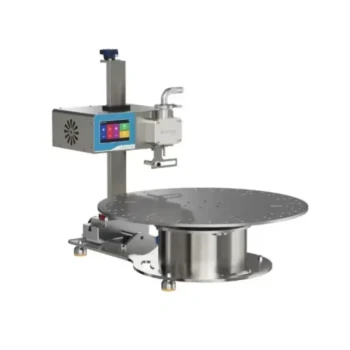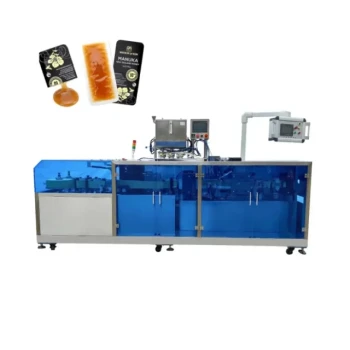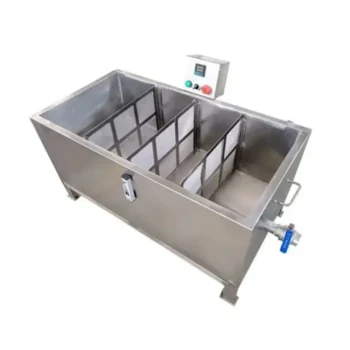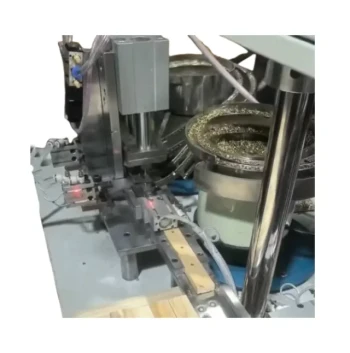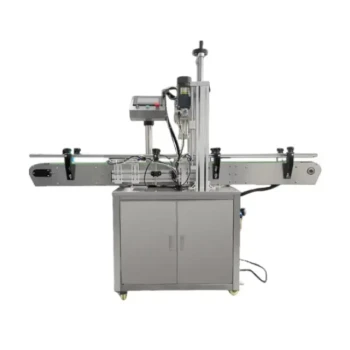To preserve its full quality, the ideal temperature for gently warming honey is between 35°C and 40°C (95°F and 104°F). This range is warm enough to re-liquefy crystallized honey but cool enough to protect its delicate enzymes, antioxidants, and aromatic compounds. Exceeding this threshold begins to degrade the very properties that make high-quality honey so unique.
The challenge with heating honey is a fundamental conflict: you need warmth to melt the glucose crystals, but heat is the primary enemy of honey's natural enzymes and flavor. The solution is to use gentle, indirect heat that mimics the natural, stable temperature of a beehive.
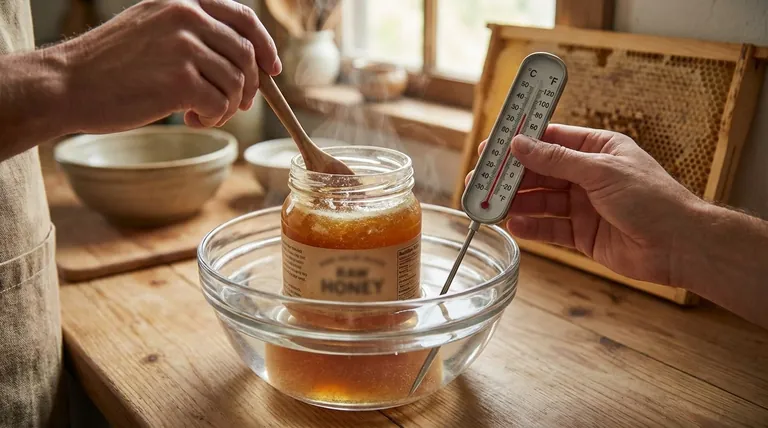
Why Temperature Control is Critical
Honey is a complex biological substance. Its properties are sensitive and easily altered. Understanding what you are trying to preserve is the first step in handling it correctly.
The Problem: Natural Crystallization
Crystallization is a natural process, not a sign of spoilage. It happens when the glucose in honey separates from the water, forming small crystals. This is completely reversible.
The tendency to crystallize is tied to the honey's specific floral source, which dictates its ratio of glucose to fructose. Honeys high in glucose, like clover or dandelion, will crystallize much faster than those high in fructose, like acacia or tupelo.
The Risk: What Heat Destroys
Applying excessive heat irreversibly damages honey's quality in three key ways:
- Enzyme Destruction: Raw honey contains beneficial enzymes like diastase and invertase, which are introduced by bees. These proteins are denatured and destroyed by high temperatures, starting around 40°C (104°F).
- Flavor and Aroma Loss: The delicate floral notes and unique aromas of honey come from volatile compounds. Heat causes these compounds to evaporate, leaving behind a simpler, often one-dimensional sweet taste.
- Increased HMF Levels: Heating causes a chemical reaction that increases levels of Hydroxymethylfurfural (HMF). While HMF is present in trace amounts naturally, high levels are a definitive indicator of overheating or old age and are a key quality marker used in the honey industry.
The Best Method for Gentle Warming
The goal is to apply slow, consistent, and low-level heat. This requires patience but ensures the honey's integrity remains intact.
The Gold Standard: A Warm Water Bath
This is the safest and most recommended method. It provides gentle, even heat that you can easily control.
Place your sealed glass jar of honey into a bowl of warm water. The water should not exceed 40°C (104°F)—it should feel pleasantly warm to the touch, not hot.
Let the jar sit, replacing the water as it cools. The process can take anywhere from 30 minutes to several hours, depending on the size of the jar and the extent of crystallization.
What to Absolutely Avoid: The Microwave
Never use a microwave to warm honey. Microwave radiation heats unevenly, creating "hot spots" that will far exceed the safe temperature limit.
Even on a low power setting, parts of the honey will be superheated, instantly destroying enzymes and degrading its flavor profile.
Understanding the Trade-offs
Your choice of heating method comes down to a clear decision between speed and quality.
Speed vs. Quality
There is no way to heat honey quickly without damaging it. Any method promising rapid results, such as placing the jar in hot or boiling water, will sacrifice its beneficial properties and delicate flavors for the sake of convenience. The best method is always the slow method.
Raw vs. Pasteurized Honey
It is also important to know what kind of honey you have. Most commercial honey found in large supermarkets has been pasteurized (heated to 70°C / 160°F or higher).
This process destroys all enzymes and much of the original flavor to prevent crystallization on the shelf. If your honey is already pasteurized, the primary concern is simply avoiding scorching the sugars. For raw, unpasteurized honey, however, careful temperature control is essential to preserve its unique benefits.
Making the Right Choice for Your Goal
Your approach should be dictated by the type of honey you have and what you want to preserve.
- If your primary focus is preserving the full benefits of raw honey: Use a carefully monitored warm water bath, keeping the temperature below 40°C (104°F), and be patient.
- If your primary focus is simply re-liquefying commercial, pasteurized honey: You can be less strict with temperature, but gentle heat will still best preserve its remaining flavor and prevent a scorched taste.
- If your primary focus is speed for a baking recipe: Acknowledge that you will be sacrificing honey's delicate enzymes and aromas for the sake of convenience, as baking temperatures will alter it anyway.
By understanding the delicate nature of honey, you can make an informed decision to protect its integrity every time.
Summary Table:
| Key Factor | Ideal Range | Why It Matters |
|---|---|---|
| Temperature | 35°C - 40°C (95°F - 104°F) | Protects delicate enzymes and flavor compounds from degradation. |
| Best Method | Warm Water Bath | Provides gentle, even heat that mimics a beehive's stable temperature. |
| What to Avoid | Microwave, Boiling Water | Creates hot spots that instantly destroy honey's quality. |
For commercial apiaries and distributors, proper honey handling is key to product quality and customer satisfaction. HONESTBEE supplies the durable, high-quality beekeeping supplies and equipment you need to efficiently manage your honey harvest and processing, from extraction to gentle warming. Ensure your honey retains its premium value. Contact our wholesale experts today to discuss your equipment needs.
Visual Guide
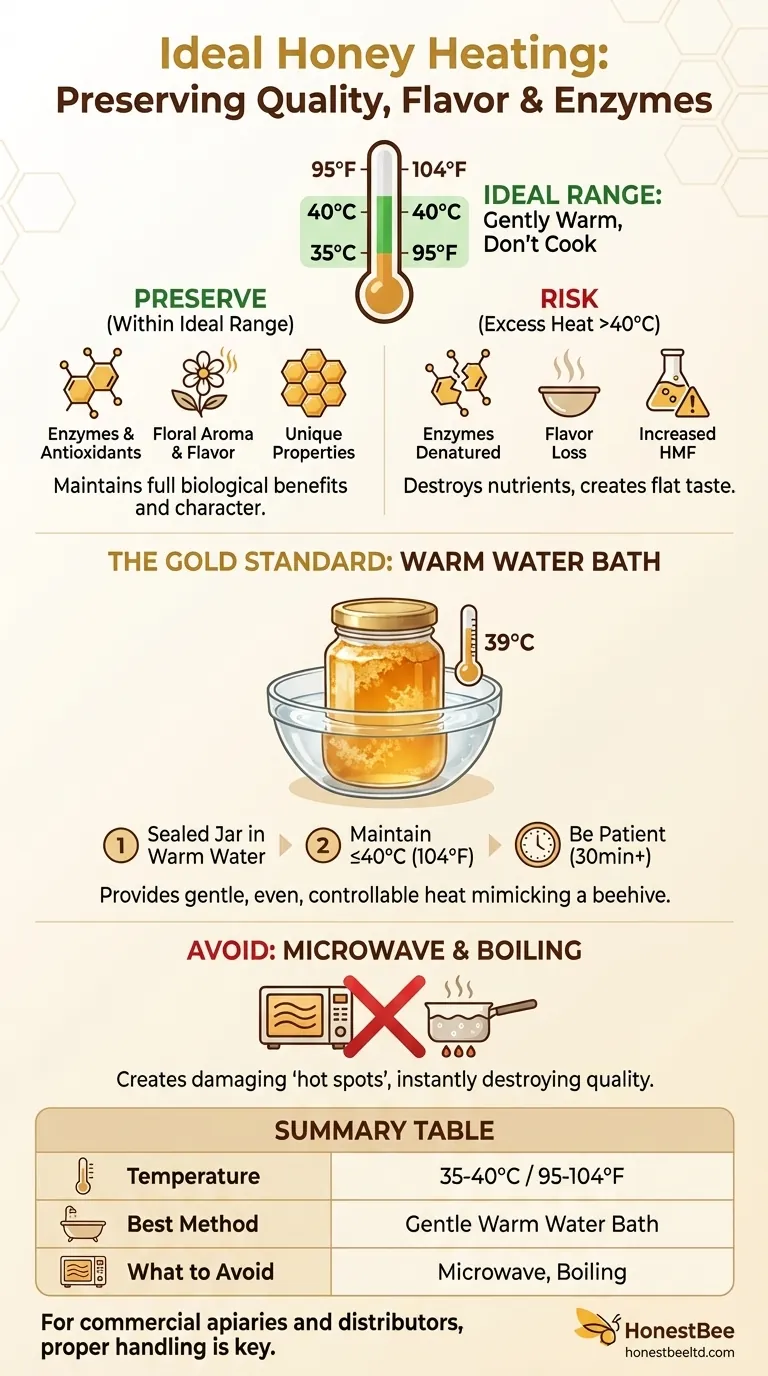
Related Products
- Fully Automatic Honey Filling Packaging Machine for Processing Line
- Pneumatic Double Nozzle Honey Filling Bottling Packaging Machine
- Manual Honey Filling Machine Bottling Machine for Honey
- Double Nozzle Small Honey Filling Machine Honey Sachet Packing Packaging Equipment
- Automatic Honey Filling and Filtering Machine for Beekeeping Bottle Filling
People Also Ask
- What are the benefits of using honey filling machines? Boost Efficiency & Quality in Your Apiary
- How does an overflow honey bottle filling machine work? Achieve Perfect Shelf Appeal for Your Brand
- What are the maintenance requirements for honey packaging machines? Prevent Downtime with a Simple Cleaning Routine
- How does a heating mechanism in a honey filling machine help? Unlock Speed, Accuracy & Premium Quality
- What are the key features of a honey packaging machine? Essential for Quality & Efficiency










